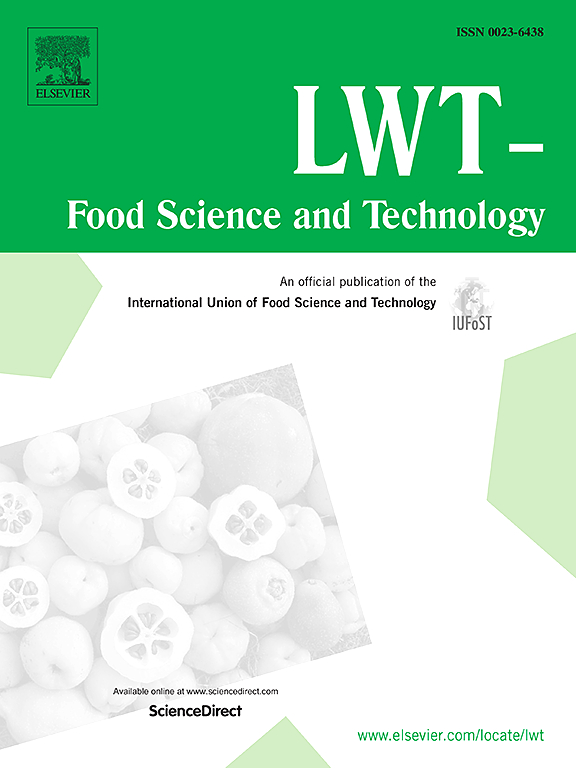Identification and antioxidant activities of chickpea albumin peptides and their fractions following fermentation by Bifidobacterium animalis subsp. lactis BB-12
IF 6
1区 农林科学
Q1 FOOD SCIENCE & TECHNOLOGY
引用次数: 0
Abstract
Chickpea albumin has rich contents of essential amino acids, high protein bioavailability and pronounced antioxidant activity. As reported previously, chickpea albumin peptides (CAP) significantly increased the abundance of Bifidobacterium during the in vitro fecal fermentation. However, the mutual relationship between CAP and Bifidobacterium growth remains unclear. In this study, peptide sequences in CAP were identified by LC-MS/MS, and CAP fractions (F1, F2, and F3) were further separated by Sephadex G-15 chromatography. Moreover, F3 most significantly promoted the growth of Bifidobacterium animalis subsp. lactis BB-12 (BB-12), and 66 peptides were newly generated after the 24-h fermentation. The abundance of potential antioxidant peptides predicted by the UniDL4BioPep model was approximately 71.43%, which explained the enhancement of F3 antioxidant activities after fermentation by BB-12. These findings indicated that F3, which shows strong antioxidant and prebiotic effects, can be utilized for functional foods or additives for industrial production of Bifidobacterium.
动物双歧杆菌亚种乳杆菌 BB-12 发酵后鹰嘴豆白蛋白肽及其组分的鉴定和抗氧化活性
鹰嘴豆白蛋白含有丰富的必需氨基酸,蛋白质生物利用率高,具有明显的抗氧化活性。此前曾有报道称,鹰嘴豆白蛋白肽(CAP)在体外粪便发酵过程中能显著增加双歧杆菌的数量。然而,CAP 与双歧杆菌生长之间的相互关系仍不清楚。本研究通过 LC-MS/MS 鉴定了 CAP 中的肽序列,并通过 Sephadex G-15 色谱进一步分离了 CAP 产物(F1、F2 和 F3)。此外,F3 对动物双歧杆菌亚种 BB-12(BB-12)的生长具有最明显的促进作用,发酵 24 小时后新产生了 66 个肽段。UniDL4BioPep模型预测的潜在抗氧化肽的丰度约为71.43%,这解释了F3经BB-12发酵后抗氧化活性增强的原因。这些发现表明,F3 具有很强的抗氧化和益生作用,可用于功能性食品或双歧杆菌工业生产的添加剂。
本文章由计算机程序翻译,如有差异,请以英文原文为准。
求助全文
约1分钟内获得全文
求助全文
来源期刊

LWT - Food Science and Technology
工程技术-食品科技
CiteScore
11.80
自引率
6.70%
发文量
1724
审稿时长
65 days
期刊介绍:
LWT - Food Science and Technology is an international journal that publishes innovative papers in the fields of food chemistry, biochemistry, microbiology, technology and nutrition. The work described should be innovative either in the approach or in the methods used. The significance of the results either for the science community or for the food industry must also be specified. Contributions written in English are welcomed in the form of review articles, short reviews, research papers, and research notes. Papers featuring animal trials and cell cultures are outside the scope of the journal and will not be considered for publication.
 求助内容:
求助内容: 应助结果提醒方式:
应助结果提醒方式:


